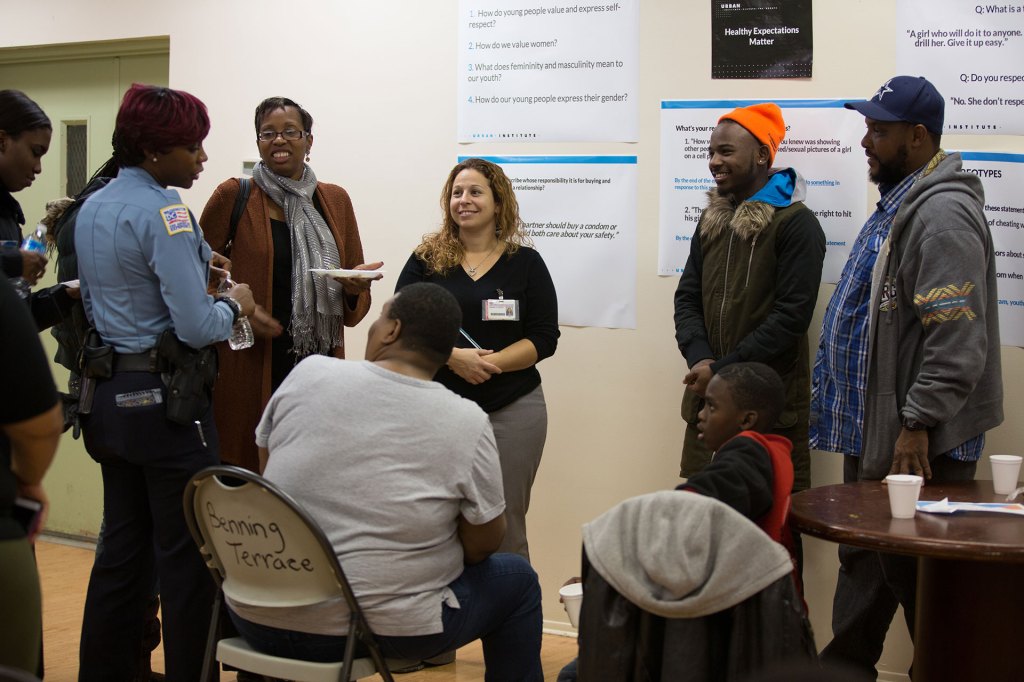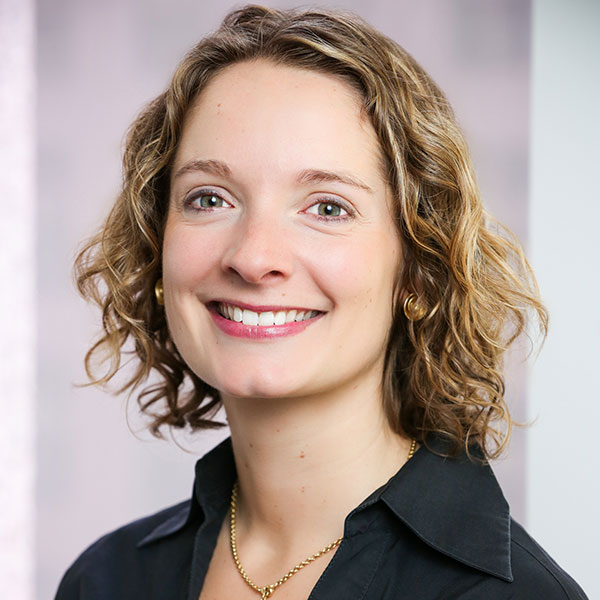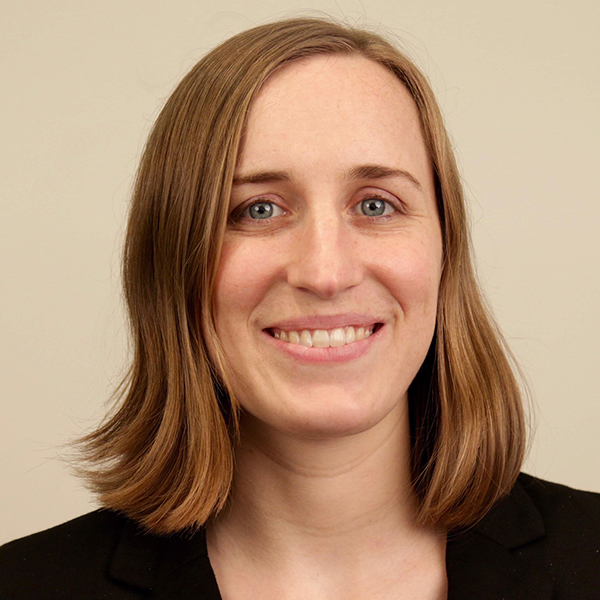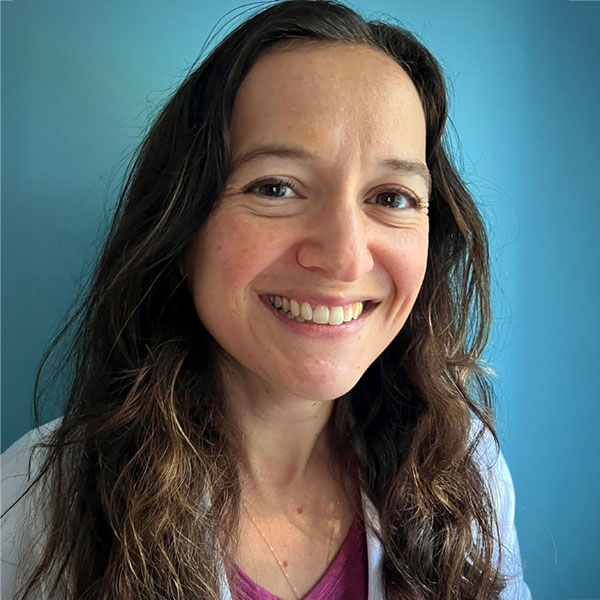Numbers aren’t the whole story: Why community partnership matters
Numbers can only tell you so much. To truly understand how people experience the economy, you have to reach out and start a conversation with them. A partnership between the Fed and the Urban Institute shows how community-engaged research approaches are catching on for good in major institutions.
By
, Fed Communities

Lived experience is valuable expertise
Participatory or community-engaged methods bring community members into a project as partners and experts in shared work rather than relegating them to being studied from outside. “I use the term participatory to indicate that it’s not a focus group or a conversation that happens just one time,” said Elsa Falkenburger, director of the Community Engagement Resource Center (CERC) at the Urban Institute. CERC serves as a thought leader on participatory methods and is a resource center providing tools and assistance for those taking on community-engaged projects.
Participatory methods can be used for many purposes, from conducting research to drafting policy. “Individuals who would typically be seen as research subjects,” Falkenburger said, “are instead seen as fellow experts and collaborators in the work that we do.”
“Community engagement happens on a spectrum from informing to power shifting,” she continued. At one end, lighter projects might include touchpoints with community partners to get their feedback. In more involved efforts, community members fully partner in the design, work, and desired outcomes of a project.
A time-tested approach in many fields and communities
Falkenburger explained that many fields use a participatory approach, whether or not it’s defined that way. Public health often embraces the model. For example, community health workers with roots in a neighborhood provide care for other community members while respectfully gathering valuable data as trusted representatives.
Falkenburger also points to the traditional methods of decision-making in some tribal communities. A thoughtful, participatory process ensures community members’ rights and information are kept safe. Community-engaged approaches can be particularly important for communities of color that have been harmed in the past by outsiders’ research methods and conclusions, Falkenburger said.

“Individuals who would typically be seen as research subjects are instead seen as fellow experts and collaborators in the work that we do.“
– Elsa Falkenburger, Director, Community Engagement Resource Center at the Urban Institute
A data walk is one example of a participatory approach. Researchers bring existing data about a neighborhood or group to the table to share with community representatives. Together, they discuss both the numbers and also vital context that might be missing. Community members fill in the data gaps with evidence from their own lived experience. The resulting information is richer and more useful in addressing a particular challenge.
The Fed’s community development teams explore participatory methods
“A lot of the traditional ways that the Fed does research can’t answer all of our questions about the economy,” said Julie Siwicki, a community and economic development adviser at the Atlanta Fed. “One of the benefits of community-engaged research is that you can get beyond the numbers and spreadsheets that the Fed is more known for.”
Never miss a story.
Siwicki and Fed community development colleagues Tiffany Hollin-Wright, James Colombe, and Bina Shrimali applied for and won an innovation to impact (i2i) grant from the Fed’s Board of Governors to further explore this idea. In 2021, they called in consultants, including Falkenburger’s CERC team, to help guide their initial work. They named the project Participatory Action Research for Fed Success, or PAR4.
“Our vision is to elevate community expertise across all Fed research and engagement,” said Siwicki. “We are working to generate interest and build capacity across the Federal Reserve System to do more of this kind of work.”
Building a participatory community of practice at the Fed
Siwicki explained that PAR4 centers on what the team calls a community of practice: a way for Fed staff to learn about and test formalized participatory methods. Piloting the approach with specific projects while hosting larger Fed-wide conversations on the topic helped the PAR4 team see what this work might look like at the Fed. It also prompted them to think about how to expose other colleagues to the value of participatory work and build support for such projects.
The PAR4 team identified several Fed community development staff to take on specific community-engaged projects within a nine-month timeline using i2i grant and other funding. Four projects ultimately moved forward, each centered in one of the Fed’s 12 regional Reserve Banks.

At the Kansas City Fed, the cohort organized a data walk around one neighborhood’s access to broadband internet. The Philadelphia Fed’s cohort developed a data walk to review and discuss wealth equity information with community members.
The San Francisco Fed’s project aimed to gather data about weather-related risks with members of an affected community.
Meanwhile, the Atlanta Fed team worked to establish a network of community advisors to strengthen relationships between the Fed and local partners.
Formalizing participatory methods in practice
Some staff at institutions like the Urban Institute and the Fed have long taken a participatory approach in their research work without necessarily realizing it. Why, then, is it important to build a formal guiding framework around that approach? The PAR4 cohorts’ experiences shed valuable light on this question.
For example, community of practice members learned that building in enough time is essential to deeper collaboration. That might mean laying out proper timelines to identify and invite key participants from the community.
Establishing roles, norms, and expectations for conversations also proved to be important. When participants join together from many walks of life to work on a common project, the cohorts discovered, building trust and communication over time matters.
Also on the communication front, the cohorts found that it’s vital to invest in common, accessible tools for sharing information and ideas across the group. Research institutions often have their own internal communications systems that don’t always work well outside the institution. That incompatibility can lead to frustration when collaborating elsewhere.
Understanding different participants’ motivation and goals matters too, and that also takes time. Community members may not have the same priorities as the institution in a given project. An institution might seem an unknown or imposing outsider to the community, which can raise barriers before conversation even begins. The PAR4 cohorts learned that discussing and working through these challenges early on can make a big difference in successfully building trust and working with communities.
The Fed and Urban assess a community-engaged approach under PAR4
Throughout the grant period, the PAR4 team worked with Urban’s CERC team, which provided intensive, one-on-one technical assistance to the cohorts. Additionally, the Urban team led broader drop-in workshops for other Fed staff interested in learning more about the fundamentals of participatory research.
As work on both fronts progressed in 2023, the Fed and Urban partners also focused on a third goal: institutional investment. They tracked and documented their work in order to demonstrate the value of participatory research at both organizations.

“One of the benefits of community-engaged research is that you can get beyond the numbers and spreadsheets that the Fed is more known for.“
– Julie Siwicki, Community and Economic Development Adviser, Atlanta Fed
The Fed cohorts detailed how their projects went and what they discovered along the way in how-to guides. Urban’s team drafted a thorough summary memo of the partnership, explaining what both sides learned and valued from their shared work.
Fostering institutional ecosystems and leadership buy-in
Looking ahead, Siwicki and Falkenburger hope the institutions will have a chance to continue their partnership in new ways. One key area they would like to pursue is building greater awareness and buy-in around participatory methods and research across institutions like the Fed and Urban. They see this ongoing effort as collaboratively fostering a broader community-engaged methods ecosystem. To build it, they’ll need help from the top.
“There are people that understand participatory methods at high levels in these institutions,” Falkenburger said. “Bringing them into the fold to be the champions for this work is really essential.” She’s encouraged by the enthusiasm some leaders have already expressed around the approach.
For example, San Francisco Fed President and CEO Mary Daly pointed to the value of community-engaged approaches in a Fed Communities article. “The thing about data is that it only tells part of the story,” Daly wrote. “To better understand how people are experiencing the economy in their day-to-day lives, we need to look at both the numbers and listen to community members about how the data is translating into real impact, in real time.”
The many benefits of partnering around community-engaged methods
Falkenburger and Siwicki say that the PAR4/Urban collaboration shows the value of this kind of partnership for participatory work and for the Fed itself.
“It has allowed CERC to shift from just building skills and capacity to thinking about institutional investments in community engagement,” Falkenburger said. “We knew how important it was for people at Urban and elsewhere to see that the Fed is doing this work.”
Siwicki noted that the experience has been transformative for the Fed team. “Having a partner like the Urban Institute helps us see where we are in this ecosystem with a bit more clarity. It’s humbling for us as an institution to understand we’re not the only one out there.”
“But it’s more than that,” she continued. “It’s empowering to see where your role is with respect to others and figure out where we can really lean in. It gives us a chance to ask how we can be a part of the larger movement to do more of this impactful work.”






